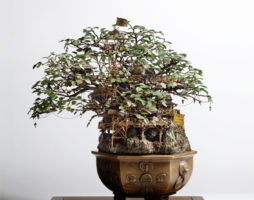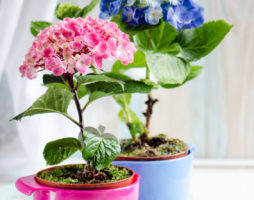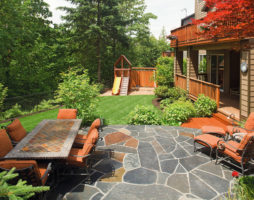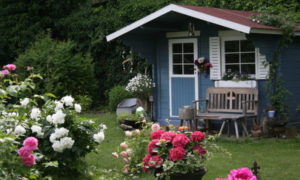The lawn belongs to the background elements of the garden landscape and can occupy a large area of the site. Today it can be seen in almost every country estate.
To enhance the beauty of the surrounding area, the grass carpet itself must be in perfect condition, so it will have to be properly looked after. The process is year-round, but lawn care in spring and autumn is the most troublesome. Let's see how to properly prepare a live carpet for wintering, so that in the spring there will be a minimum of problems with its adjustment and bringing it into a divine form.
Autumn lawn care
Independent maintenance of the lawn, without the involvement of specialists, is a daunting task. Just think about it, because with this approach everything will depend solely on your skills and knowledge. You will be responsible for the growth of the grass, whether it will be thick, whether pests and serious diseases will attack the lawn. The period of cold weather will be no less exciting. Will the grass survive under a thick layer of snow? So that the beautiful lawn, on which you have been working all summer, does not turn into an extinct wasteland, you need to correctly prepare the site for wintering.
In autumn lawn care, the following procedures are important:
1. Mowing the grass.

lawn mowing
2. Watering.
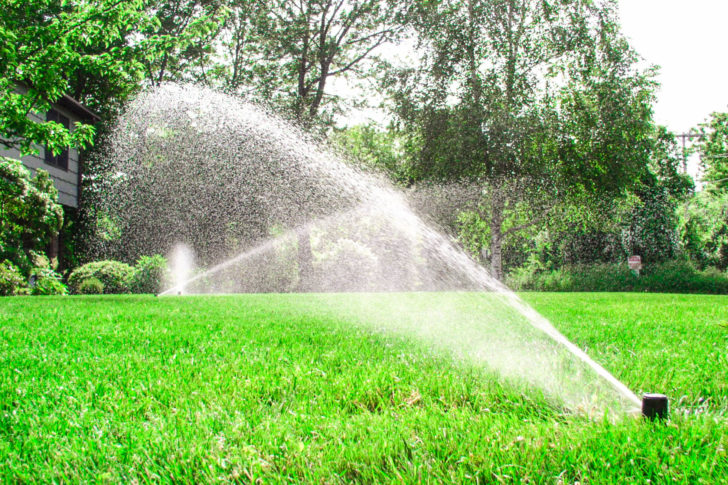
Lawn watering
3. Soil aeration.
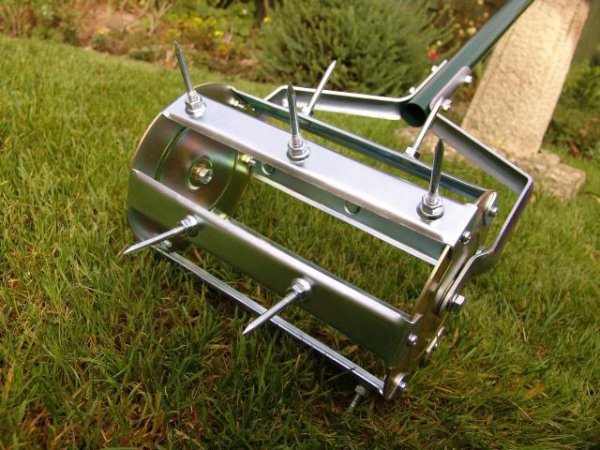
Lawn aeration tool
4. Top dressing.
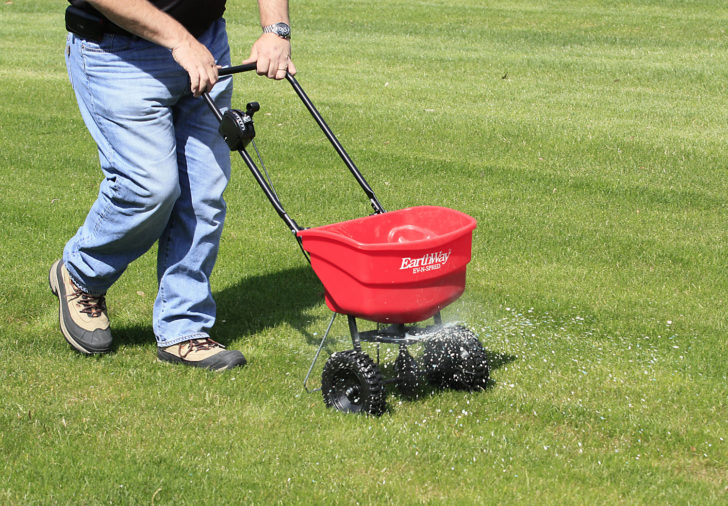
Lawn fertilization
These lawn care works in autumn should be carried out before the first frost. What and when is better to do, the gardener's calendar will tell.
September
During this period, the heat is actively on the decline, and the first autumn rains begin. The month is just perfect for arranging a new or correcting an existing lawn. If its area was regularly monitored and all the standard procedures prescribed by the rules were constantly followed, then, most likely, there will be no need for any radical actions. In the case when the lawn is covered with bald patches, overgrown with weeds or burned out, you will have to correct the oversight and do overseeding. This will make lawn maintenance easier in the spring. The technology for performing the event is not too complicated and is carried out according to a certain scheme.
Overseeding on the affected areas
On the damaged area, you need to mow the grass low and remove it from the territory. Next, the upper soil layer is loosened with a cultivator or rake to a depth of about 15 cm. The fluffy surface is leveled and seeds are sown. Now you need to compact or roll the top layer of soil. This is done using a plywood sheet or a wide board. Complete the procedure - abundant watering of the entire lawn.
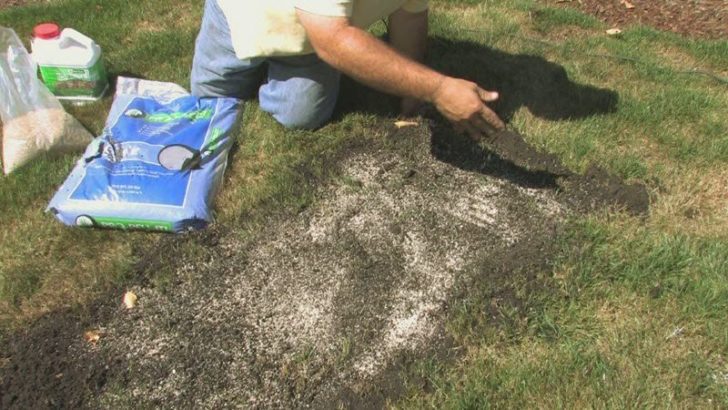
Lawn overseeding
Overseeding of a sparse lawn
The lawn is raked, loosening its upper soil soy 1.5 cm deep. Do it boldly, do not be afraid to damage the existing fit. This will not lead to serious consequences, as with spring lawn care. The grass is already strong enough. The grass mixture is manually spread over the area of the site, and one must try to sow evenly. The final step will also be watering the lawn.
To stimulate germination, fertilize the sown areas with N-P-K lawn fertilizer.
October
It is also the month of sowing. The soil is prepared in a standard way, that is, it is loosened and cultivated. It is important to calculate the sowing time, taking into account the specifics of weather conditions. The grass that has risen in winter should not be lower than 10 cm. You can think over and carry out late sowing. At the same time, the seeds laid in the ground are rolled with a roller, taking into account that they do not have time to hatch this year. They will overwinter in the ground and will please you with seedlings only in early spring.
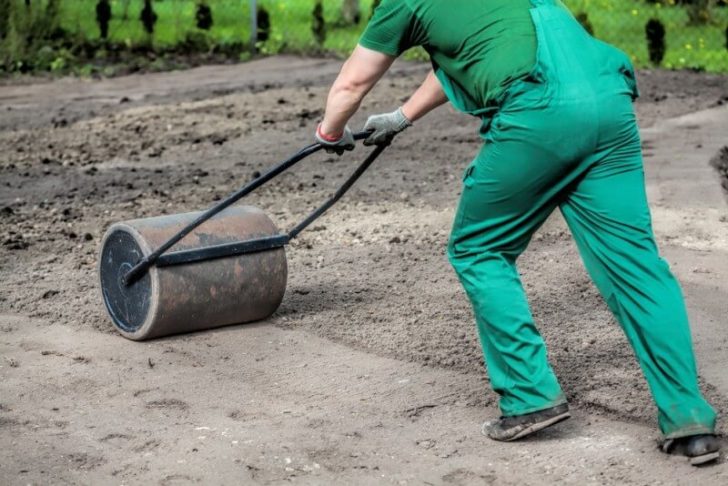
In order not to have time to sprout, the seeds are rolled with a roller
October is the month of active autumn lawn care. Particular emphasis is placed on soil fertilization. The priority of choice should be phosphorus-potassium mixtures. Their nutrients increase the winter hardiness of the grass, stimulate the growth of the root part, strengthen plant tissues at the cellular level. The latter increases the resistance of vegetation to diseases. Fertilizers are applied using a special seeder or manually. Application time - immediately after the haircut. Having fertilized the soil, it should be well watered.
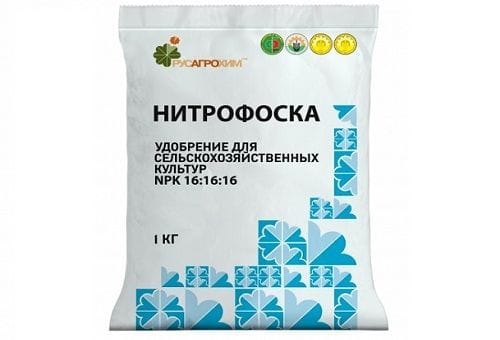
Phosphorus-potassium mixtures will increase the winter hardiness of the lawn
When using complex nutrient mixtures, choose those where nitrogen is present in minimal doses. This element is a growth stimulant and will be needed when caring for the lawn in the spring. Young shoots driven out with it in the fall will be completely unprepared to resist cold, which will lead to freezing of the lawn.
To maintain the water-air regime of the soil on the lawn, the latter should be aerated, that is, pierced with a pitchfork. This is one of the main ways to care for your lawn in the fall. It will prevent the green carpet from rotting during heavy rains, and will also help protect the soil from freezing and covering with an ice film, which is detrimental to grass roots.
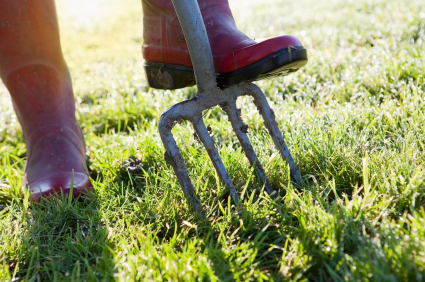
Aeration will protect the soil from freezing.
Works are carried out on dry soil. The fork immersion depth is up to 25 cm. The use of a special fork design with hollow teeth is permissible no more than once every 2 years.
November
Proper autumn lawn care is an indicator of how it will overwinter. This will largely be affected by how the last haircut was carried out. Usually it is carried out in the first days of the month, with the expectation that the vegetation still has time to recover from the procedure, recover and grow at least a little. On a lawn prepared for wintering, the grass should have a height of 6-8 cm. Longer shoots will freeze, and shorter ones will suffer from a lack of oxygen.
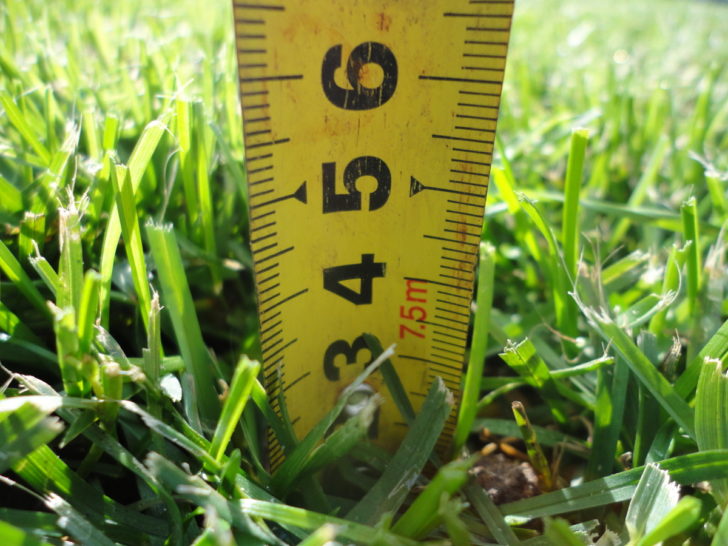
The lawn prepared for wintering should have a height of 6-8 cm
November is the time for active leaf shedding. The raging paints lay down on the lawn like a dense blanket, depriving the grass of access to light. The vegetation loses its richness of color, becomes pale, and with frequent rains it also begins to rot for the company of fallen leaves. Do not think that the foliage has protective properties. Here, just the opposite is true. Leaves lying on the lawn for a long time, grass not harvested after mowing, needles and animal waste products are huddled into a felt layer that practically does not let rain water through, but at the same time creates excellent conditions for the development of mold and fungi, as it prevents ventilation. When caring for your lawn in the fall, don't forget to thoroughly clean it of debris.
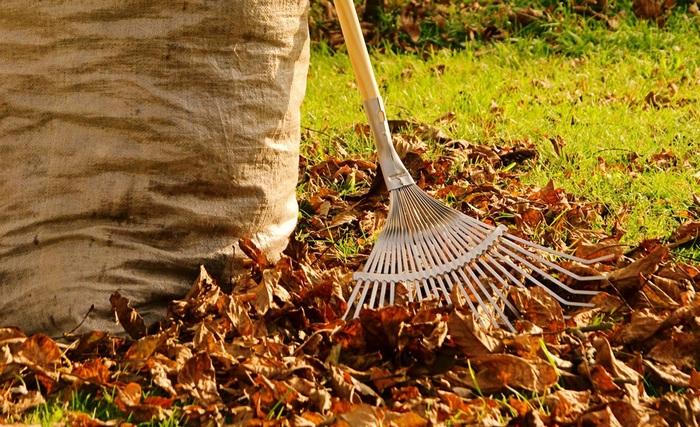
Thoroughly clean the lawn of debris and leaves
As for the repair of the green lawn, it is often postponed to March-April and they do it in vain. It is possible that this is the right decision regarding overseeding grass, it can be done during lawn care in the spring, but it is better to level potholes and pits on its surface in winter. They are covered with a mixture of leaf humus and sand. Having laid a portion, it is immediately rammed. After correcting the field, it must be covered with a mix of peat with dry compost. This will increase the fertility of the soil depleted over the summer.
Mulching
Layers of plant waste have a detrimental effect on the lawn, so they should be removed, but how to insulate tender grass so that it winters more comfortably? To do this, you will need to carry out mulching. The composition of such a mixture is determined by the specifics of the soil. Ideally, it is prepared from equal portions of soil, peat and sand. Scatter the mulch over the grassed area and you can safely wait for the arrival of cold weather.
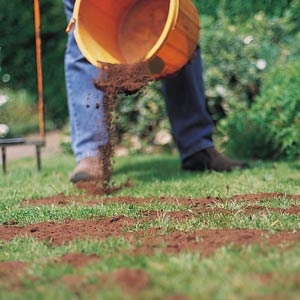
Lawn mulching
Spring lawn care
“Snowdrifts not removed during the initial lawn care in the spring will provoke the formation of serious puddles, which, in turn, can cause grass to rot”
A beautiful lawn requires care, so do not put off the work of ennobling it "for later." It is necessary to start paying attention to the lawn covering literally from the first warm days. Try not to get out of the schedule of works and not to shift the deadlines. What will need to be done?
1. Dispose of melt water.
This is a mandatory event. They begin to engage in it at the first sign of melting snow. Snowdrifts not removed during the initial care of the lawn in the spring will provoke the formation of serious puddles, which, in turn, can cause the grass to rot. In general, the drainage system, which you had to equip before sowing the site with grass, should be responsible for the removal of melt water from the lawn. But if you neglected this recommendation, then you will have to take up a shovel and get rid of snow deposits manually. This is not a very good idea, since you cannot do without trampling on the green zone, which is strictly forbidden by the rules, and not only during spring and autumn lawn care, but in general, in any season. The traces left on the grass will be difficult to mask.
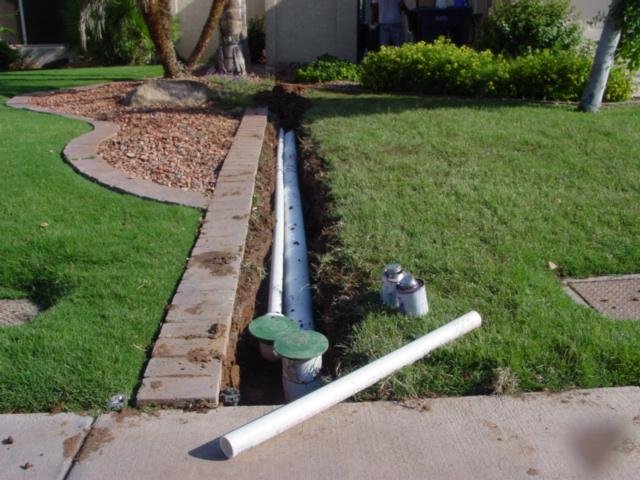
lawn drainage system
2. Apply top dressing.
This is done during the period of final warming, but before the growth of young grass begins. Try not to miss the moment, otherwise you will burn the greens. And further. Do not try to add more nutrient mixtures. An excess of chemicals will not benefit the plants. Adhere to the norms always indicated on the labels of the compositions.
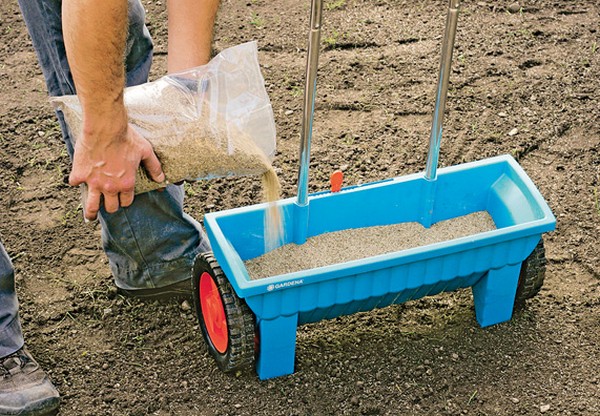
Top dressing is carried out before the growth of young grass
3. Remove trash.
Combing the lawn is done after the fertilizer has been absorbed by the soil. You will need a garden rake for the job. It will be necessary to pass the lawn with them both in the longitudinal and in the transverse direction. In this way, you can collect the felt formed during the winter and clear the area of accumulated debris, as well as loosening the hard crusty surface of the soil to improve air exchange in the root zone.
4. Take measures to aerate the soil.
You can do this in two ways:
a) using an aerator;
b) mechanically.
The main objective of the procedure is to prevent the formation of compactions in the soil and moisture stagnation. The greatest attention should be paid to places overgrown with moss. In spring lawn care, the soil is pierced less deeply than in autumn lawn care. Its depth is only 8 cm.
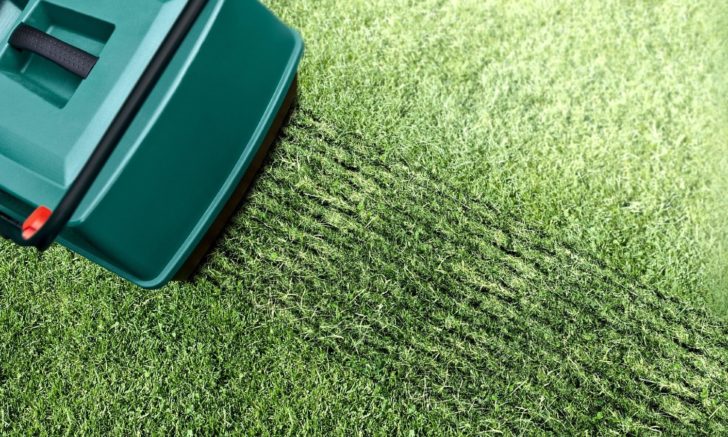
Spring aeration of the soil is less deep
5. Prepare the irrigation system.
Drip irrigation is an ideal option for moisturizing a lawn of any size. If possible, it is worth organizing automated watering. Make sure the lawn is evenly moistened. To do this, you will need to properly distribute sprinklers throughout its territory.
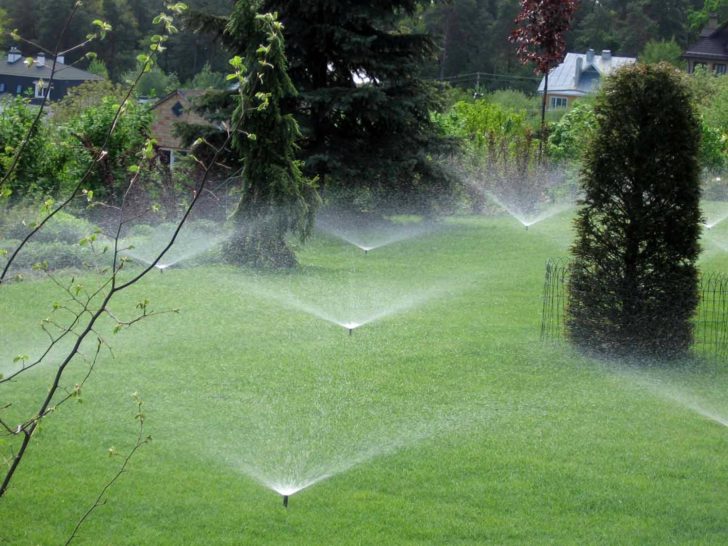
Lawn watering system
6. Get rid of weeds.
In principle, this is an all-weather procedure, tedious, but still extremely necessary. Weeds don't just spoil the aesthetic appearance of the landscape background, they impede the growth of grass. It is possible to fight with an undesirable addition when caring for a lawn in spring and autumn, chemically or mechanically. In the first case, special preparations are used - herbicides. Treatment with pesticides is carried out early in the morning or at sunset and only in calm weather.The method is good for the care of large-scale lawns. Don't forget about security issues. Use protective clothing, respirator, gloves. On small lawns, you can get rid of weeds by pulling them out with your hands. When removing plants mechanically, you should try to pull them out with their roots. You can use a small shovel or root extractor.
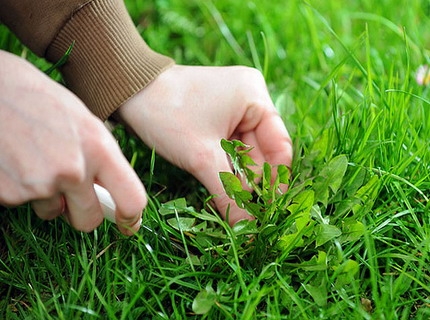
lawn weeding
As we have already mentioned, each type of work has its own deadlines. To make it easier for you to navigate the intricacies of spring lawn care, experts have compiled a monthly calendar of events.
March
Time of active snowmelt. All efforts in the first half will be aimed at preventing the stagnation of meltwater. With inefficient soil drainage or the complete absence of such a system, the issue will have to be resolved in a radical way, throwing snowballs aside and aerating the soil with a pitchfork. It will be necessary to do this with great care and accuracy, especially on young lawns, since ruts and potholes are easily formed on wet ground and deep marks remain from feet that are loaded into soft soil. In subsequent seasons, try to tackle this lawn care task in the fall.
April
Dried and warmed earth is a signal for spring feeding of grass. Priority should be nitrogen-containing compounds. This component is responsible for stimulating plant growth and will help the lawn recover faster after winter. As for the amount of fertilizing, on average, about 1 kilogram of fertilizer mixture will be needed per 40 squares of lawn.
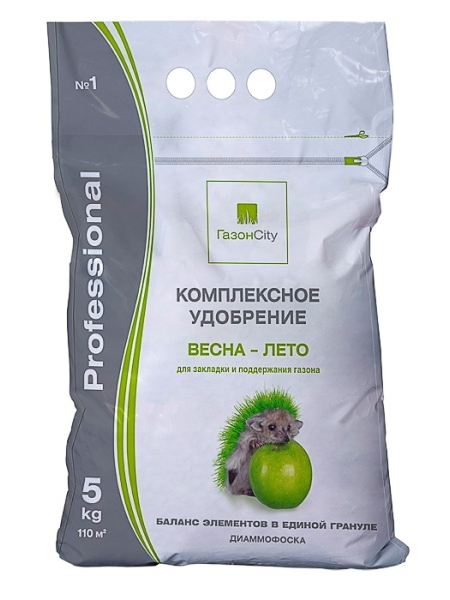
Nitrogen-containing fertilizers stimulate lawn growth
In the middle of the month, a planned ferticulation of the lawn is carried out. During this procedure, dead shoots, rotten leaves and other debris that have appeared on the lawn are removed. High-quality loosening of the surface soil layer will contribute to the prevention of plant diseases. After combing, take a critical look at your lawn and assess the degree of density of its landscaping. With a thinned germination of shoots, overseeding of grass can be carried out if this was not done during the autumn lawn care. It is correct to sow a grass mixture similar to that with which the territory has already been sown. This way you keep the integrity of the background in terms of color. Oversowing is carried out as follows: the seeds are evenly scattered over the site, after which it is well watered.
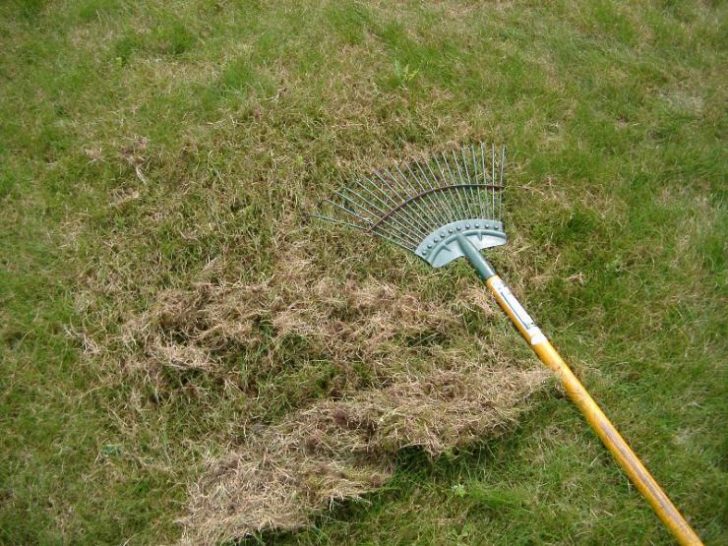
Spring lawn ferticulation
Often the surface of the lawn zone is covered with ruts and depressions. The reason for this may be the neglect of drainage work. Instead of a smooth green surface, you see a semblance of a minefield. These flaws will have to be eliminated during spring lawn care. Soil is poured into the formed meadows, which is brought from other parts of the garden. It is carefully loosened, leveled and sown with grass seeds. The earth, in the place of overseeding, is compacted. Watering is left for the evening. Moisturizing will be subject to the entire area of the lawn, and not just reanimated areas.
The end of the month can also be the time for top dressing. This is the deadline for completing the procedure, but it is still better not to delay with soil nutrition.
May
By the beginning of this month, all the main work required for lawn care in the spring is already being completed. The grass is actively growing, which means that the need for its first haircut is brewing. Experienced gardeners do not recommend low mowing the green carpet in the first run. Exposure of delicate greenery can lead to sad consequences. The lawn will turn into a scorched desert. A gentle haircut, at which at least 5 cm of growth will be left, on the contrary, will help strengthen the cover, which will allow you to cut the grass much lower next time. When performing work, use a lawn mower equipped with a grass catcher. If there is none in your everyday life, then plant residues will have to be collected manually. Don't leave them on the lawn.They can cause root rot.
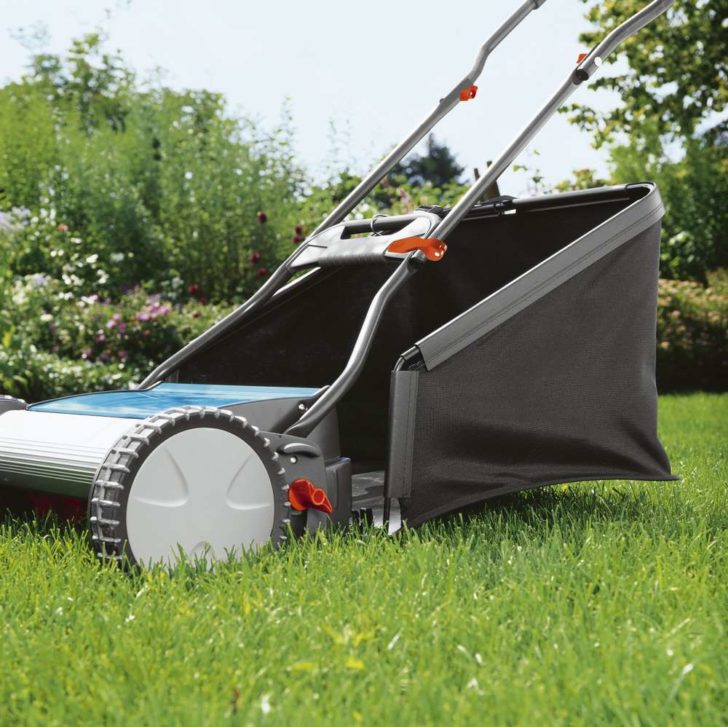
Lawn mower with grass catcher.
Unfortunately, May also becomes the month of the beginning of troubles. During this period, the first foci of disease lesions appear, so in addition to the standard spring lawn care, you will also have to deal with its improvement.
back to index ↑Lawn diseases and how to deal with them
“The treatment of plants during spring and autumn lawn care with copper sulphate and adequate watering, without waterlogging the soil, will help protect the territory from misfortunes”
What is the most common lawn grass disease?
1. Powdery mildew.
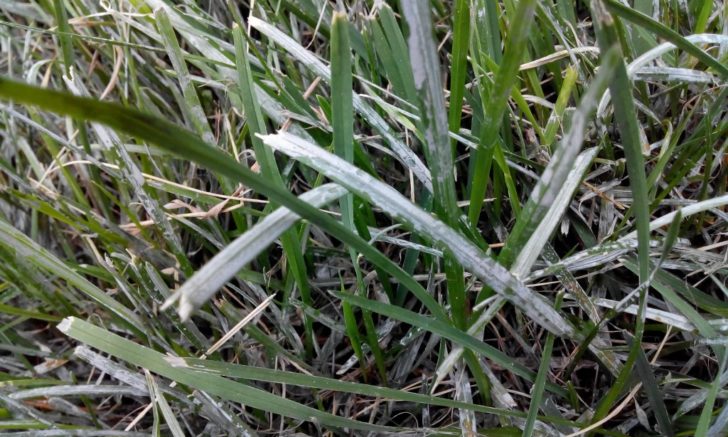
powdery mildew
2. Fusarium.
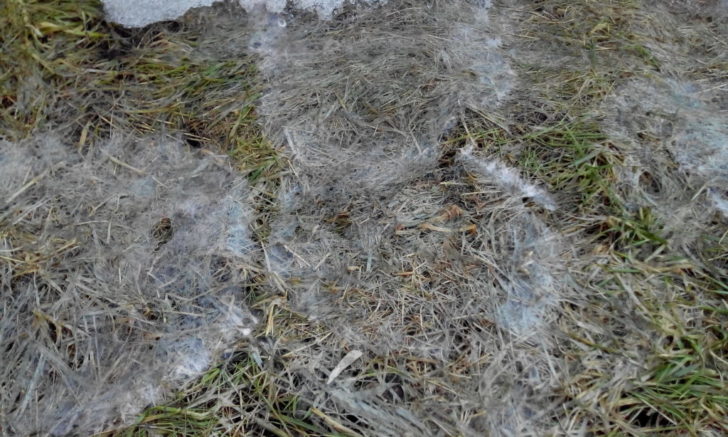
Fusarium
3. Fungal diseases.
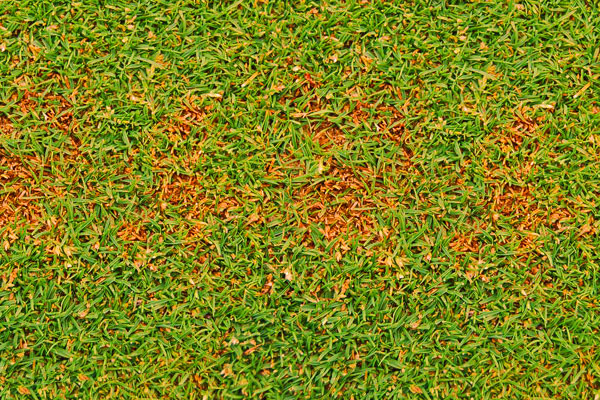
fungal lawn disease
The treatment of plants during spring and autumn lawn care with copper sulphate and adequate watering, without waterlogging the soil, will help protect the territory from adversity. If the disease has already spread sufficiently, drastic measures will have to be resorted to. First of all, low grass mowing is performed in the affected area, after which either deep loosening of the soil is carried out, or it is dug up with the bed turning over. The plot is left to rest for about a week, and then sown again. For the speedy restoration of the lawn, fast-growing varieties of grass can be sown.
If a fungus is detected during lawn care in the spring, it is better to replace the soil and completely reseed everything.
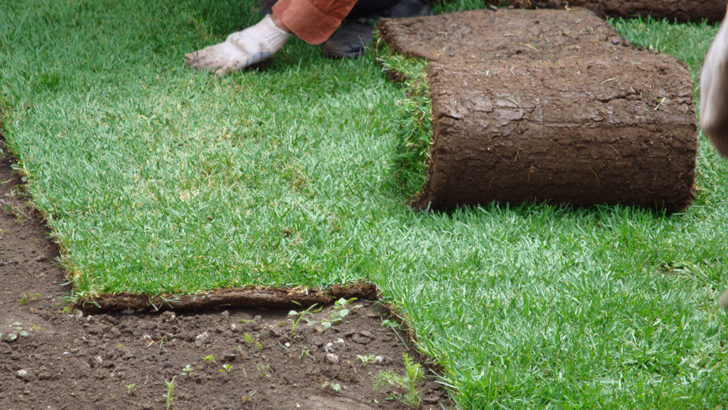
If the lawn is affected by a fungus, the soil should be replaced
It is worth processing not only the affected area, but also capturing 20 centimeters of healthy crops. Thus, you will prevent the spread of infection throughout the lawn.
Worst of all is the situation with fusarium. The problem is that the disease is transmitted not only through contaminated soil when caring for a lawn in autumn and spring, but also through the air, so do not console yourself with the hope that grass in a neighboring area with Fusarium is a localized process and nothing threatens you. Literally in a few days, silvery or pinkish islands of sticky grass will be on your territory. The affected areas are no more than 20 cm in diameter, but there can be quite a lot of them. From the side, it seems that the grass is powdered with snow. Greenery quickly dries up and turns into dead wood. If you managed to notice the disease at the very initial stage, urgently treat the surface with a systemic fungicide. In advanced cases, you will have to remove the sod and reseed the site, which is tiring and expensive.
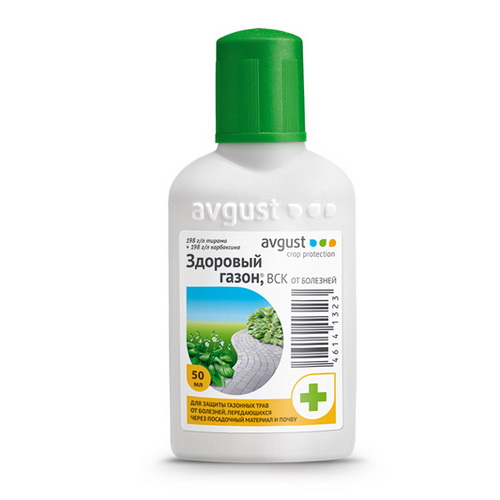
If fusarium is detected, treat the lawn surface with a fungicide
Lichening the soil will allow you to get rid of lichens, which can also be included in the plan of lawn care procedures in the spring. Reducing the acidity of the soil is the simplest way to remove parasitic plants.
The appearance of algae indicates poor drainage of the soil and its excessive compaction.
But the red filiformity can be considered a real disgrace to the gardener. This is a sign of lawn abandonment. Due to insemination by parasitic flora, the grass acquires a reddish color. A riot of greenery is replaced by straw stubble. There are no special ways to deal with the problem. Here it is only necessary to properly perform spring and especially autumn lawn care. Feeding and combing the grass will help put it in order.

red filiformity
Conclusion
Lawn care in the spring will require diligence and increased attention. Do not be lazy to regularly assess the condition of the soil, vegetation cover and do not neglect the proposed activities. In this case, your work will be really rewarded, and you, to the envy of all your neighbors, will get a perfectly even, juicy green lawn on the site.

